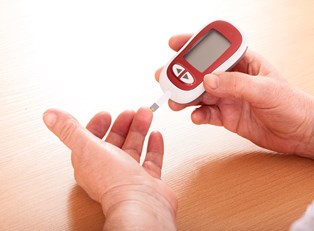Diabetes is a disease that affects a person’s inability to regulate his or her blood sugar levels. In a healthy person, the pancreas secretes a hormone known as insulin that helps transfer sugar from the blood into the cells, where it acts as an energy source. However, diabetes prevents this process from being successfully completed.
Beneath the umbrella term "diabetes" are two primary forms of the disease: type 1 and type 2. While they do share some similarities, there are enough differences between the two that the medical community considers them distinct from one another. Here is a look at both the traits they share in common as well as the aspects where they differ.
Similarities
At the most general level, people with type 1 and type 2 diabetes share the same problem: an inability to regulate blood sugar levels in the body. However, the mechanism by which this happens varies between the two conditions.
Additionally, both type 1 and type 2 diabetes share the same set of symptoms. These include excessive thirst, frequent urination, unexplained weight loss, tingling or numbness in the hands and legs, blurred vision, fatigue, and unusually itchy or dry skin. However, it’s also important to remember that in some cases, people with either type of diabetes may show only mild symptoms or no symptoms at all.
Finally, treating both type 1 and type 2 diabetes is typically very similar. There are a number of medications available today to help manage symptoms, but insulin injections still remain one of the most widely used ways to address both forms.
Differences
One of the first striking difference between type 1 and type 2 diabetes is their rate of prevalence. There are approximately 26 million Americans who currently live with diabetes, and among those almost 95% suffer from type 2—while only 5% (or about 1.3 million) have type 1.
As mentioned earlier, the mechanism by which diabetes prevents the body from regulating blood sugar differs between type 1 and type 2. With type 1, the body’s immune system actually attacks the cells in the pancreas responsible for producing insulin. Researchers are still not entirely sure why this occurs, but they believe that it is largely based in genetics. On the other hand, people with type 2 diabetes are still capable of producing insulin. Rather, over time the insulin that they do produce becomes ineffective at regulating blood sugar, leading to a condition known as insulin resistance. These changes are not genetic but instead stem from lifestyle factors, such as a high-sugar diet.
There are also differences in the average age of people with both conditions. For many years, type 1 diabetes was also referred to as “juvenile diabetes” due to the fact that most people are diagnosed before the age of 20. Conversely, type 2 diabetes was referred to as “adult onset diabetes,” since it’s a disease that progresses over time and is normally not noticed until adulthood. However, these titles have become less useful over the years as rates of type 2 diabetes have skyrocketed among children. In 1994, only about 5% of diabetes cases in children were type 2, but by the 2000s, this number had jumped up to almost 20%. Despite this growth in childhood type 2 diabetes, the average age of diagnosis is still 45—much higher than that of type 1.
Finally, treatment of these conditions in their early stages may be different. For people with type 1 diabetes, insulin injections are a necessity from diagnosis onwards. However, in its beginning, type 2 diabetes can be regulated with oral medication. Over time this medication normally becomes ineffective and patients must switch over to injections as well.



